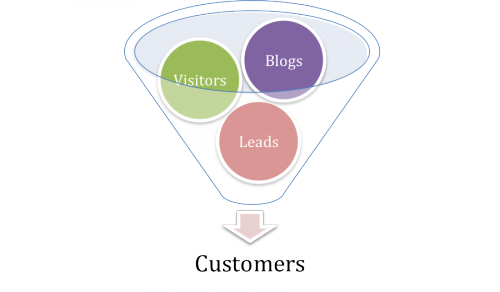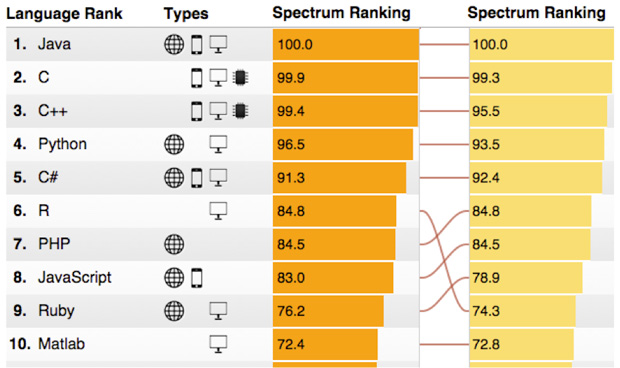
New to blogging for your business? Or maybe you have tried to blog before but saw no results? Either way, surely you have heard that blogging can be an effective, arguably the most effective tool, to increase website traffic, generate leads and develop long-lasting, happy customers. But blogging enthusiasts often forget to answer a critical question: why is blogging important for my business… they just say that it is.
Let’s start with the most important insights and steps you need to know to create a powerful blog. In a few short paragraphs you will fully understand why blogging is important for business and how to do it yourself.
Insight 1: Your blog is not about you, its about the problems your ideal customers want to solve.
Many businesses get a big, fat “F” when creating their first business blog. Why? Because they blog about themselves, not their ideal customers.
We expand this concept in more depth in our digital marketing strategy and inbound marketing blogs, but to elegantly summarize:
Unfortunately, your customers don’t really care about your business, they care about solving their own problems and answering their own questions. Plain and simple.
An effective business blog is not a news feed about your company. If you would like to share news about your company, start a news feed or a newsletter, do not post it on your blog.
A blog is a place to share insights about your industry and the solutions your general products or services can provide to your ideal customers.
Step 1: Understand what your ideal customers’ problems and questions are, and how your business provides solutions.
Insight 2: There are millions of people searching for your products and services all the time. Make sure they find you.
Getting your website found really comes down to one word: Google.
It’s Google’s job to offer you the best content on the internet in relation to your search terms. If you want to rank highly in search results, you need to make it easy for Google to do their job.
First, Google needs to figure out the intention/goal of the search to provide the searcher with relevant content.
Is the searcher looking for a guide, an article, a comparison, a product? Google can deduce this by the way a searcher asks a question.
For example, if you search for “Why is blogging important for Business”, Google may infer you are looking to read an article about that question. If you search for “How to start a Business Blog”, you’re probably looking for a guide or tips about blogging. If you search for “Hire a Business Blogger”, you’re looking to pay someone to blog for you. Google knows what type of content you are looking for by inferring intention through search terms.
Second, based on the intention, Google wants to provide the searcher with the best websites on the internet with relevant content.
So hows does Google decide which website is best? There are many factors, but the two big ones are: relevancy and authority.
Relevancy: how closely does the content of a web page match the exact query of the searcher.
Example: If someone searches for, “How to start a Business Blog”, and your page is titled, “How to start a Business Blog”, and the article contains a how-to guide about starting a business blog, Google can confidently display your site as relevant to the intention of the search.
Authority: the rating Google has assigned to your website based on overall quality.
This rating consists of many factors: website design, ease of navigation, inbound links, and much more. For the purposes of this article about the importance of blogging, we will focus on one factor: “Pages Indexed”.
In a nutshell, the more pages you have on your website, the more authority your website receives. And guess what? Every blog post counts as a different page. So each time you publish an article, Google adds another page on your site index and bumps up your rating. Awesome.
Step 2: Take the top questions your ideal customers have and write articles that directly answer them. These questions are your keywords, atoledo and they should be long and targeted (learn more about creating a keyword strategy here). Once you have that down, blog as much as possible.
Insight 3: Give your blog readers a reason to deepen their relationship with your company.
So you’re now a master at identifying your ideal customers, understanding their problems and how they try to solve them online, and writing targeted articles that provide them direct, relevant value. So what now?
Just getting visitors to your website does not directly translate into more business. Because of this, your boss is going to start grilling you about why the time you spend blogging is valuable. And to be honest, blogging is not important for business unless you have a way for your blog visitors to convert into contacts or leads – meaning capturing names, email addresses, phone numbers, or any other type of personal or contact information.
Therefore, you need clear calls to action on your blog that ask your readers to: subscribe, download a free ebook, schedule a consultation, download a coupon, etc.
This is the link that directly connects your blogging efforts to your ability to generate leads and sales. Its all about the calls to action.
Step 3: Create calls to action on all your blog posts that are relevant to the article, giving your readers a strong incentive to convert to a contact.
Insight 4: Use the intelligence you collect from your blog to generate customers.
Once a visitor lands on your blog and becomes a contact, you can get a great idea of what type of person they are, what their problems are and how you can further solve them.
You can nurture your contacts into leads and customers by sending them more relevant content based on their now apparent wants and needs.
For example, if someone searches for “why is social media important for business”, then they subscribe, then download a free ebook about redesigning a business website, you know that they are doing research about creating a really effective digital presence.
You can then offer them the opportunity to have a free consultation about creating a digital marketing strategy. Here, you can assess their needs and see if you are a good match to do business together.
Once you get good matches, they become customers, and you can put a monetary value on your blog by seeing how many customers were generated from each post.
Step 4: Analyze the website history of your blog readers and send them more great content until they want to chat or buy something. Don’t push or annoy them, just keep providing value until they are ready.
Knowing about these insights is essential to understand why blogging is important for business. Now you know how to make it an effective tool for your own company. Don”t forget to subscribe to get more articles about modern business and digital marketing!







